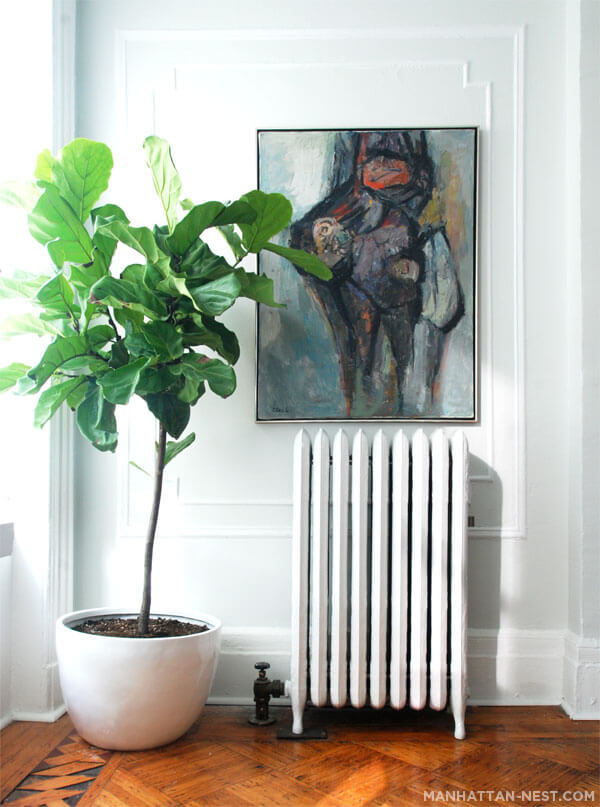Like those fluffy Moroccan rugs, brass sconces and sparkling white subway-tiled kitchens, the fiddle leaf fig has become a must-have in cool, modern homes. But the plant du jour, known for its giant fiddle-shape leaves and architectural silhouette, isn’t always the easiest to care for. Put the tropical plant in a spot it doesn’t like and those gorgeous, lush green leaves will soon be covered with brown spots and drop like flies.
With so much varying information out there (“water it twice a week;” “soak it in the shower;” “put it by a bright window;” “keep it away from direct sunlight”) and confusing care instructions — what exactly is bright indirect sunlight? — we decided to take it to the experts. Horticulturist and Exotic Angel Plants grower Justin Hancock tells us the do’s and don’ts of caring for a fig.
Bring on the bright light Watering The trick to feeding your fig Keep the humidity level in check Sign of trouble: Browning leaves When to toss your fig: How do you know if your tree is too far gone?
“The biggest thing for the fiddle leaf fig is that it likes bright light,” Hancock says. But what’s with all the contradictory information online?
“A lot of house plants require indirect light because they come from the rainforest, and so they’re not exposed to direct sun on their leaves,” he explains. “But because the fiddle leaf fig is a tree, it’s not growing on the rainforest floor. So don’t be afraid to put it in front of a window. It’ll be happier with a little more direct light.”
Another topic that websites differ on is watering schedule.
“You want the top inch to start to dry out before you water it again,” Hancock says. “So it’s really best not to go by a calendar, until you get to know your plant pretty well.”
He says you’ll start to find a rhythm with time.
“[After watering] let the water drain out,” instructs Hancock. “If there is still water sitting at the bottom after 45 minutes, dump that because the soil won’t absorb it after that time, and then you run the risk of rotting the roots.”
“Heating makes the air super dry in the winter, and a lot of tropical plants, like the fig, can have trouble with that,” warns Hancock. But don’t reach for your misting bottles just yet.
“Misting is a bit of a gardening myth,” he says. “It makes us feel good because we feel like we’re doing something, but once the water evaporates, the effect is gone.” Instead, set a tray of water on the radiator so you constantly have evaporation going on, or set the fig on a tray with pebbles and water. “The moisture will evaporate and create this little humid cell,” he says.
“Work on the humidity as soon as you notice this start to happen,” says Hancock. “If you see browning start, set up the humidity tray, or even put a small humidifier near your plant to prevent it from going much further.”
“Part of it is a judgment call, and how much work you want to put into rehab for it,” says Hancock. “Even if it has just one leaf left, if you supply the conditions it wants, you can usually bring it back to good health. But because it is such a slow-growing plant, it takes a long time, and most people — except the really hardcore plant lovers — aren’t willing to invest in that. So when it gets to the point where you’re not happy with it anymore, and you’re not able to change the conditions, then I would say switch it out. “
How to care for the trendy fiddle leaf fig

Manhattan-nest.com


















